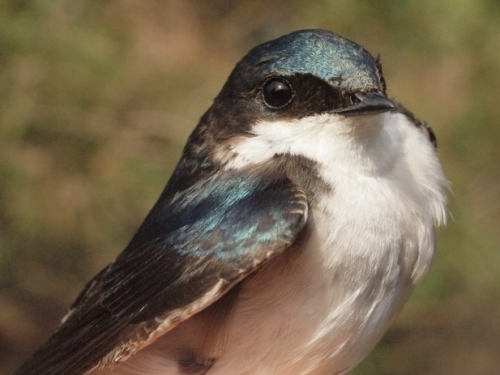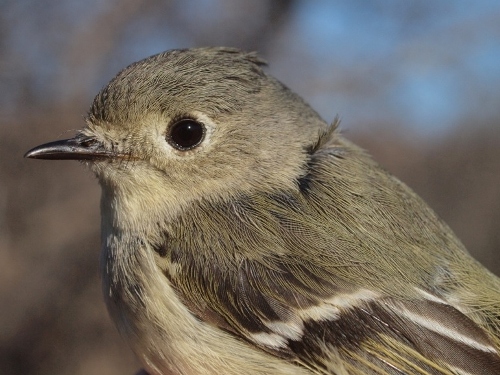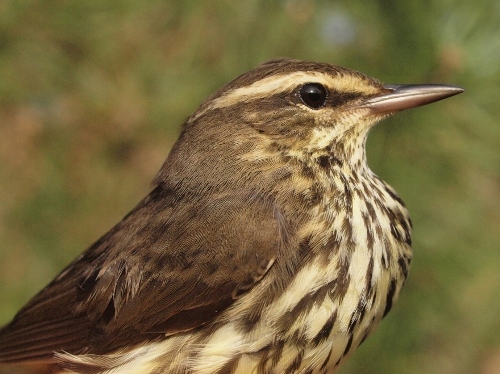|
|
THIS WEEK |
THIS SPRING |
2014 TOTAL |
SITE TOTAL |
|
# birds (and species) banded |
84 (17) |
450 (29) |
450 (29) |
46760 (114) |
# birds (and species) repeat |
22 (7) |
72 (12) |
72 (12) |
9206 (70) |
|
# birds (and species) return |
9 (6) |
52 (11) |
52 (11) |
1486 (38) |
|
# species observed |
70 |
85 |
86 |
209 |
|
# net hours |
378.8 |
1240.1 |
1240.1 |
80423.4 |
|
# birds banded / 100 net hours |
22.2 |
36.3 |
36.3 |
58.1 |
|
|
Note: table does not include nocturnal banding (owls) |
Banders-in-charge: Simon Duval, Gay Gruner
Assistants: Richard Beauchamp, Marc Boisvert, Cindy Bouchard, Claude Cloutier, Luke Currin, David Davey, Jean Demers, Liete Fortier, Barbara Frei, James Junda, Lisa Keelty, Helen Kohler, Marcel Lebeau, Barbara MacDuff, Catherine Russell, Marilou Skelling, Clémence Soulard, Patricia Stotland, Christiane Tremblay
Notes: In 2006, 2011, and 2012, the pace of migration picked up noticeably in week 6 … but more frequently, it has been a relatively quiet period, as was the case this year. The 84 birds banded this week was less than half of last week’s total, but that of course was inflated by the single day deluge of Cedar Waxwings. Factoring that in, the 450 birds banded to date is still far more at this point of spring than any previous year. However, the number of species observed is far behind normal – both the 70 species observed this week and the 85 for the season to date are the lowest counts for week 6 since our first full spring in 2005, and well below the ranges of 78-88 and 97-112, respectively, that we’ve recorded annually from 2006 through 2013.

Tree Swallow numbers have been declining noticeably at MBO, but the count observed this week was somewhat greater than at the same time in 2013, so we are hopeful they represent a modest rebound for the species.
(Photo by Simon Duval)
|
For the second year in a row, Northern Waterthrush was the first warbler species of the year to be banded at MBO – only last year that happened one week earlier. Reflecting how migration is later this spring, it was the only warbler banded this week, whereas in 2013 five warbler species were banded during week 6. Three other species were banded this week for the first time this spring: Tree Swallow, Chipping Sparrow, and Brown-headed Cowbird. Despite the near record low number of species observed this week, there were 11 newcomers for the season, including the year’s first two warblers (Northern Waterthrush and Palm Warbler), another couple of sparrows (Savannah and Lincoln’s), and a variety of others (Solitary Sandpiper, Eastern Kingbird, Warbling Vireo, Cliff Swallow, Barn Swallow, Red-breasted Nuthatch, and Gray Catbird).
This week’s
top 10 [last week's top 10 in brackets]
#
individuals banded |
mean # individuals observed daily |
1. Red-winged Blackbird (19) [7] |
1. Canada Goose (188) [2] |
2. White-throated Sparrow (16) [3] |
2. Red-winged Blackbird (54) [3] |
3. Ruby-crowned Kinglet (14) [6] |
3. Cedar Waxwing (54) [1] |
4. Cedar Waxwing (12) [1] |
4. Ring-billed Gull (20) [5] |
5. American Robin (6) [2] |
5. Song Sparrow (18) [7] |
6. Song Sparrow (3) [3] |
6. American Robin (18) [4] |
7. Northern Waterthrush (2) [-] |
7. Black-capped Chickadee (13) [9] |
| 7. American Tree Sparrow (2) [9] |
7. White-throated Sparrow (13) [10] |
| 7. Swamp Sparrow (2) [9] |
9. Tree Swallow (11) [-] |
10. 8 species tied (1) [-]
|
10. Ruby-crowned Kinglet (11) [-]
|
|
After a relatively slow start to the season, Red-winged Blackbird jumped up to take the top spot on the list of species banded this week, as has been the case at this point in spring for five of the previous nine years as well. It was closely followed by White-throated Sparrow and Ruby-crowned Kinglet, both of which are almost always also in the top three in week 6 – so in that sense the results were quite typical. On the other hand, we have to go back to 2005 for a higher count of Cedar Waxwings banded in week 6, and the half-dozen American Robins banded this week was above normal as well, and has generated a new record high for spring with four weeks yet to go. Beyond that, numbers were small, with eight species tied for tenth place, and three sparrows just barely more numerous with two or three individuals each.
Among the species observed, it was no surprise to see Canada Goose way out in front, as in every previous year but 2006 (when numbers were similar, but it was bumped to second place by even larger flocks of Greater Snow Geese). For the sixth year in a row, Red-winged Blackbird followed in second place, and numbers were fairly typical for this point in spring. Just behind by a fraction was Cedar Waxwing, with last week’s large flocks tapering off somewhat, but still far more abundant than usual. Ring-billed Gull numbers were similar to last week, while Song Sparrows increased a bit this week, and matched the mean daily high recorded for this week, back in 2005. Black-capped Chickadees and White-throated Sparrows both increased marginally from last week, while new additions at the bottom of the top ten were Tree Swallow and Ruby-crowned Kinglet.
|

Ruby-crowned Kinglets are always among the common species at McGill Bird
Observatory in early May, and this year is proving to be no exception.
(Photo by Simon Duval)
|



